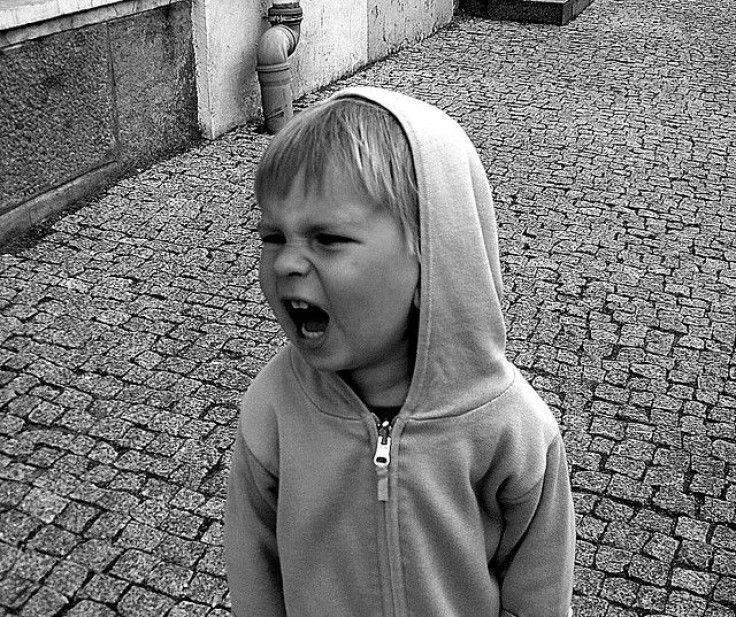Using Irritability Scale To Predict Mental Illness In Preschoolers: When Do Kids' Tantrums Forecast Something More Serious?

When should you worry about the bad behavior of a very young child? A new study from Northwestern University suggests a new method for distinguishing between expectable misbehavior and the kind of “acting out” that is cause for concern.
Over the past few decades, psychologists have begun to see mental health problems as falling along a continuum. It's no longer a matter of being depressed or not depressed, for instance, but the degree of depression. A dimensional approach is more realistic, yet psychologists, especially those who evaluate children, find it difficult to decide when certain behaviors are developmentally normal or when they are evidence of a problem.
Yet one trait — irritability — can signal a range of different mental illnesses and also appears early in life. Irritability is a vague term, indicating a range of intensities, and so begs the question, When is a child too irritable? Dr. Lauren Wakschlag, a professor and vice chair of the department of Medical Social Sciences, and her colleagues conducted an investigation of young children to understand when irritability is “just a passing phase” or the symptom of a psychological maladjustment. Importantly, this research team also wanted to probe whether temper might be helpful when diagnosing mental illness in children.
For data, they turned to the Multidimensional Assessment of Preschoolers Study (MAPS), which includes a large, diverse sample of preschoolers recruited from the waiting rooms of multiple pediatric clinics in a large urban area of the United States. Approximately half of the sample were boys and were living in poverty. Participants in MAPS were between the ages of 3 and 5, predominantly African-American, Hispanic, and non-Hispanic white. The researchers selected a group of just under 500 of the children to participate in three assessments over an average period of 15.8 months.
At the start of the current sub-study, each child’s mother completed the Temper Loss scale, which measures 22 items (including quality, intensity, and context) of mood and tantrum. This scale differentiates between, say, a typical tantrum and a destructive one. Six months later, the children took part in an intensive assessment, while 80 percent also completed the Temper Loss scale again. Nine months later, 94 percent of participants completed the Temper Loss scale and survey measures of clinical symptoms and impairment. Gathering the data, the researchers examined patterns of temper in the children in order to understand whether a diagnostic scale of irritability might be helpful.
While higher Temper Loss scores were associated with poor self-regulation and lower competence (on test games), “preschoolers with even mildly elevated Temper Loss scale scores showed substantially increased risk of symptoms and disorders,” wrote the authors in their published study. In fact, some children whose irritability scores could still be classified within the normal range had as high as a 67 percent risk of mental health issues. That said, the research team discovered general temper patterns could be discerned for most of the children, and over time these patterns were revealing of their mental health. Even more, scores on the Temper Loss scale showed "incremental validity" over the Diagnostic and Statistical Manual of Mental Disorders in predicting subsequent impairment.
For these reasons, the researchers recommend clinicians use early, repeated assessment using the Temper Loss scale. They also caution against “focusing solely on the extreme end of the continuum” since that will underestimate those at risk. It's the pattern doctors should focus on when assessing the mental health of children, they say.
Source: Wakschlag LS, Estabrook R, Petitclerc A, et al. Clinical Implications of a Dimensional Approach: The Normal: Abnormal Spectrum of Early Irritability. Child and Adolescent Psychiatry. 2015.



























